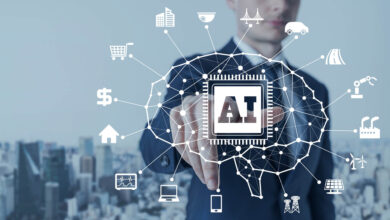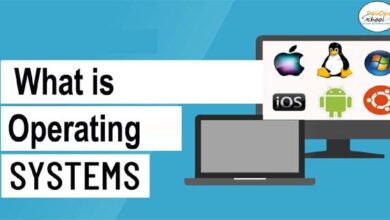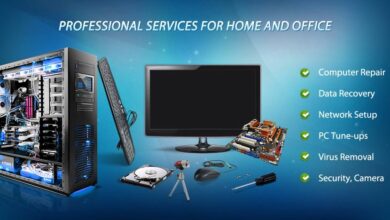The Future of Robotics: What You Should Know About Robots
The Future of Robotics: What To, How To, And What You Should Know
Let’s face it. We are living in an era of artificial intelligence and robotics, both of which have the potential to transform the world as we know it. With these two major developments comes a new set of challenges that must be answered with new skills and tools. In order to ensure that future generations can continue to thrive, we need to tackle the many challenges we’ve been dealt with head-on. This means turning to technologies that can meet our needs efficiently, adapt and evolve over time, while being safe and accessible at the same time. The future of robotics is looking bright and we should take full advantage of it. While not much is known about how exactly artificial intelligence will change in the near future, there are a few things we can assume for sure: 1). It will become more efficient and cheaper than ever before 2). Robots will increasingly play roles in our daily lives 3). New industries will grow up out of necessity 4). Wayfinding systems, autonomous driving , mobile apps, and other technology advancements will help us lead more productive lives AI is already improving our ability to think, reason, plan, understand, respond quickly and make informed decisions at a high level — when it comes to making robots obsolete? If these trends continue unchecked (and they probably will), robotics could one day replace all but the most experienced human workers within industries such as nursing homes or education institutions. Let’s take a look at what you need to know about artificial intelligence (AI)
What is Robotics?
Robotics, or directly programmed automation, is the study of automating and/or programming robotics systems so that they work within human-made boundaries. The early work focused on controlling robots with non-human partners, but as robotics technology advanced, algorithms became naturalized as human-level abilities. In the words of author Noam Chomsky, “Artificial intelligence is the extension of human intelligence, and it will affect every field of robotics.” The future of robotics lies in creating robots that are “brains,” or software, programmable, autonomous, and purposeful. These capabilities can help us to overcome some of the challenges of building robots that can work autonomously and in teams.
Why is robotics important?
Robotics provides a wide range of skills and tools that now allow humans to work with robots and other artificial intelligence-based machines. These include: – Communication with and between robots and humans – Control of automation with robots and other robots – Video/photo/image recognition – And many other tasks that human operators can perform for robots. – The Internet of Robots is one of the most important developments in robotics in the next decade or two. This is likely to capture an enormous portion of the market for robots. – Robots can “see” and understand human intentions. This is possible because of the combination of an AI system and the human brain. – Robots with “brains” can be programmed to perform tasks. This provides them with a level of autonomy that is not possible with a non-intelligent bot.
How to use robotics in your life: Theories, techniques and tips
To effectively use robotics in your own life, you must first understand its capabilities and the challenges it faces. Then, you must develop technologies to overcome these challenges. Finally, you must be able to convincingly demonstrate that these technologies work and that they are safe. – In order to overcome challenges, robotics engineers must adopt a mindset that places importance on the long-term rather than the short-term. This means thinking about how robots can help solve problems that affect human health and the environment in the future. This includes global health ( Viral and Acquired Disabilities , food insecurity) and sustainable fisheries management (Disabled people in the marine environment). – The design and implementation of robotics in offices and factories should be driven by practicality, not by artistic and technological innovation. In other words, robots should be used for the practical and mundane tasks that would otherwise fall under the umbrella of artificial intelligence. – And finally, consider how you can use robotics in your home. For example, by adding sensors to your home and office to detect things like heat and moisture, or by adding controls to maintain a certain temperature in your home or workplace. With enough creativity and effort, robotics could provide a solution to meet these needs. – Robots with purpose can also be used to carry out other tasks that are considered vital to human survival such as fire and emergency services. This can include caring for the elderly, disabled, and people with Month-old and Children’s diseases. – Can robots be good for work? As humans progress in technologically advanced countries, so has the adoption of robotics. By now, most people understand that automation does not necessarily mean that there will be a reduction in human jobs. On the contrary, automation can often be a positive development in terms of the kind of work that humans are willing to accept as part of a greater good. Robotics can be used to automate a wide range of tasks that would require a full-time human, such as: – First aid, food and drink preservation (barring disaster or illness), power generation, and maintenance/maintenance of equipment, etc. – Emergency medical services, such as heart and breathing machine use.
Should we be afraid of robotics?
There is certainly a risk that robotics will one day become an everyday work tool. This is, after all, what robots are for —to do. But there is also a risk that, because of this, robotics will become a demotivational factor, causing people to lose all motivation to work and instead become content with a job that requires little effort and is paid well. These could be the results of: – Lack of motivation due to job insecurity. – Lack of recognition due to a changing job market (Rooms are getting smaller, commute times may be longer, and there is a greater chance of travel). – Lack of support from fellow workers due to reduced demand for hours. – Lack of training due to destruction, or otherwise, of robots due to a pandemic.
Future of Robots
Robotics has become a key player in the fields of robotics and automation. Its primary use is in the design and production of robots that are purpose-built for specific tasks such as robotics technicians, robots for medical assessment, robotics for manufacturing work, etc. – Robotics can be used in a variety of ways, including: – To accomplish general tasks such as controlling ride-halls and cash registers, inventory management, or as a tool for automation. – To assist in the design, development, and manufacturing of robots that perform specific tasks. – To provide feedback on current state of art. – To help engineer and manufacturing operations improve current processes. – To improve workflow and reduce crew sizes. – To improve the quality of work and prevent inefficiencies.






